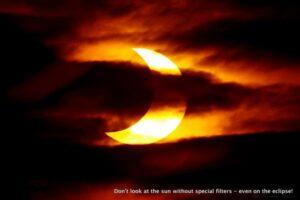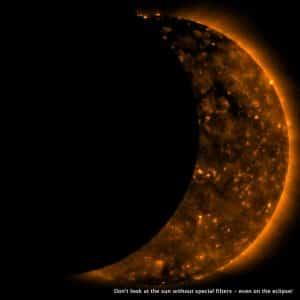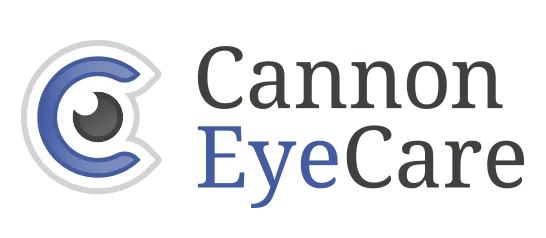Timely Tips: Solar Eclipse Safety

Solar Eclipse Safety Tips:
We all know it’s not wise to stare at the sun. Yet on the morning of the “Great American Solar Eclipse”, Monday, August 21st, 2017, it will be tempting for Seattleites and others in the across the country to do just that. It is never safe to stare directly at the sun because it is so bright that it can damage your eyes – even if you are wearing sunglasses. When considering safely viewing the solar eclipse, the length of the exposure almost does not matter. If you look at the eclipse without special solar filters you are likely to suffer from “eclipse blindness” and perhaps permanent retinal damage called solar retinopathy.
While Seattle is not in the “path of totality” wherein the sun will be fully blocked by the moon, the “Great American Eclipse” as it’s being called will still be phenomenal here in the Seattle Metro area. In Washington state (and California) the sun will darken partially, much like a crescent moon. The sky will start to darken at about 9:08am, maximal darkness will occur at 10:20am – and it will likely get rather dark. It will likely look like sunset light in the middle of the morning. People in the 67-mile wide path of totality may be able to see the stars! Then by about 11:38am it will be all over. The darkening is anticipated to be significant enough that in California where lots of the power grid is supplied by the sun, the state is warning of possible energy shortages and potential brown-outs.
Eye doctors know that staring at the sun, or a light bulb for that matter, can burn your retina right in the key spot responsible for central vision: the macula. There is a reason it really hurts and you have to look away when you accidentally glance at the sun! This important evolutionary reflex keeps you from staring at the sun and burning your maculae to a crisp. When considering solar eclipse safety, ‘Eclipse Blindness’ and ‘Solar Retinopathy’ are the major risks. Eclipse blindness is a form of vision loss that includes visual disturbance or vision loss due to sunlight burning retinal cells. The damage can be temporary or permanent and typically does not cause eye pain or headache. It can take a few hours or even a few days before patients become symptomatic.
Solar retinopathy is permanent retinal damage. This is why we wanted to write a blog post about safely viewing a solar eclipse. Solar retinopathy happens every year, most often to surfers paddling into the sunset/sunrise or others who for whatever reason stare at the sun or bright lights. Solar retinopathy occurs when an eye has looked at the sun long enough to cause scarring and permanent loss of function in the retina. Solar Retinopathy is a big deal. Imagine a situation wherein everything you look at is blurred, distorted, or missing. Sure, you side vision would probably be OK, but every face you try to see for the rest of your life would be rumpled and blurred. It’s a problem you don’t want to have, and would be much like giving yourself macular degeneration in a big hurry. So, here is what you can do to enjoy the eclipse without damaging your eyes (or blinding your children).
#1 While it will be really tempting to look directly at the sun…DON’T DO IT! Not even one quick glance is safe. Sunglasses will not protect you, no matter how dark they are – not even if they are polarized.
#2 Get yourself some special devices that make it safer (though not free of risk). Examples are a welder’s mask or glasses with a specific ISO certification, often called “solar viewing glasses”. You’ll want a pair with the manufacturer name printed on them, and “ISO 12312-2” certification. They must be in good shape, and not older than 3 years, according to NASA. A local shop in Ballard called Cloudbreak Optics sells such items, but they are going fast. We have also been told that the big-box retailer Fred Meyer sells them. The paper-framed glasses are selling for $2-3 at the time of this post (July 31, 2017).
#3 If you plan to stare at the sun through a regular pair of binoculars or a telescope, that is a really bad call. Doing so will intensify the energy, making retinal injury more likely. It’s not even safe to use binoculars in combination with the solar filter glasses noted above. There are special filters that can be used in a telescope. There are also purpose-built binocular called SUNoculars that are made for observing eclipses, etc.
#4 You can use a cardboard box, a piece of white printer paper and a little tinfoil to make a safe solar eclipse observation tool. Here is a great link to show you how to build one: https://www.timeanddate.com/eclipse/box-pinhole-projector.html
#5 If it’s cloudy, there will not be much of a show. While heading to the traffic jams of Oregon may not be worth the trouble, getting somewhere with clear skies will be key if you want to get the full experience. Seattle summers often come with blue skies, but Eastern Washington is more reliably sunny.

We hope you will get to experience this remarkable event, and that you will take precautions to keep yourself and your loved ones safe. It is our goal to educate our patients through our blog. If even one of Cannon EyeCare’s patient gets solar retinopathy from the 2017 solar eclipse our doctors would be deeply saddened. Time is of the essence. Tell your friends or share this post.

Solar Eclipse Safety Tips:
We all know it’s not wise to stare at the sun. Yet on the morning of the “Great American Solar Eclipse”, Monday, August 21st, 2017, it will be tempting for Seattleites and others in the across the country to do just that. It is never safe to stare directly at the sun because it is so bright that it can damage your eyes – even if you are wearing sunglasses. When considering safely viewing the solar eclipse, the length of the exposure almost does not matter. If you look at the eclipse without special solar filters you are likely to suffer from “eclipse blindness” and perhaps permanent retinal damage called solar retinopathy.
While Seattle is not in the “path of totality” wherein the sun will be fully blocked by the moon, the “Great American Eclipse” as it’s being called will still be phenomenal here in the Seattle Metro area. In Washington state (and California) the sun will darken partially, much like a crescent moon. The sky will start to darken at about 9:08am, maximal darkness will occur at 10:20am – and it will likely get rather dark. It will likely look like sunset light in the middle of the morning. People in the 67-mile wide path of totality may be able to see the stars! Then by about 11:38am it will be all over. The darkening is anticipated to be significant enough that in California where lots of the power grid is supplied by the sun, the state is warning of possible energy shortages and potential brown-outs.
Eye doctors know that staring at the sun, or a light bulb for that matter, can burn your retina right in the key spot responsible for central vision: the macula. There is a reason it really hurts and you have to look away when you accidentally glance at the sun! This important evolutionary reflex keeps you from staring at the sun and burning your maculae to a crisp. When considering solar eclipse safety, ‘Eclipse Blindness’ and ‘Solar Retinopathy’ are the major risks. Eclipse blindness is a form of vision loss that includes visual disturbance or vision loss due to sunlight burning retinal cells. The damage can be temporary or permanent and typically does not cause eye pain or headache. It can take a few hours or even a few days before patients become symptomatic.
Solar retinopathy is permanent retinal damage. This is why we wanted to write a blog post about safely viewing a solar eclipse. Solar retinopathy happens every year, most often to surfers paddling into the sunset/sunrise or others who for whatever reason stare at the sun or bright lights. Solar retinopathy occurs when an eye has looked at the sun long enough to cause scarring and permanent loss of function in the retina. Solar Retinopathy is a big deal. Imagine a situation wherein everything you look at is blurred, distorted, or missing. Sure, you side vision would probably be OK, but every face you try to see for the rest of your life would be rumpled and blurred. It’s a problem you don’t want to have, and would be much like giving yourself macular degeneration in a big hurry. So, here is what you can do to enjoy the eclipse without damaging your eyes (or blinding your children).
#1 While it will be really tempting to look directly at the sun…DON’T DO IT! Not even one quick glance is safe. Sunglasses will not protect you, no matter how dark they are – not even if they are polarized.
#2 Get yourself some special devices that make it safer (though not free of risk). Examples are a welder’s mask or glasses with a specific ISO certification, often called “solar viewing glasses”. You’ll want a pair with the manufacturer name printed on them, and “ISO 12312-2” certification. They must be in good shape, and not older than 3 years, according to NASA. A local shop in Ballard called Cloudbreak Optics sells such items, but they are going fast. We have also been told that the big-box retailer Fred Meyer sells them. The paper-framed glasses are selling for $2-3 at the time of this post (July 31, 2017).
#3 If you plan to stare at the sun through a regular pair of binoculars or a telescope, that is a really bad call. Doing so will intensify the energy, making retinal injury more likely. It’s not even safe to use binoculars in combination with the solar filter glasses noted above. There are special filters that can be used in a telescope. There are also purpose-built binocular called SUNoculars that are made for observing eclipses, etc.
#4 You can use a cardboard box, a piece of white printer paper and a little tinfoil to make a safe solar eclipse observation tool. Here is a great link to show you how to build one: https://www.timeanddate.com/eclipse/box-pinhole-projector.html
#5 If it’s cloudy, there will not be much of a show. While heading to the traffic jams of Oregon may not be worth the trouble, getting somewhere with clear skies will be key if you want to get the full experience. Seattle summers often come with blue skies, but Eastern Washington is more reliably sunny.

We hope you will get to experience this remarkable event, and that you will take precautions to keep yourself and your loved ones safe. It is our goal to educate our patients through our blog. If even one of Cannon EyeCare’s patient gets solar retinopathy from the 2017 solar eclipse our doctors would be deeply saddened. Time is of the essence. Tell your friends or share this post.
Pike Place Office
1906 Pike Pl Unit 8-b,
Seattle, WA 98101
University Village Office
2602 NE University Village St,
Seattle, WA 98105
Pike Place Office Hours
Monday
Closed
Tuesday
10:00 am - 5:00 pm
Wednesday
Closed
Thursday
10:00 am - 5:00 pm
Friday
10:00 am - 5:00 pm
Saturday
10:00 am - 5:00 pm
Sunday
Closed
University Village Office Hours
Monday
10:00 am - 6:00 pm
Tuesday
10:00 am - 6:00 pm
Wednesday
10:00 am - 6:00 pm
Thursday
10:00 am - 6:00 pm
Friday
10:00 am - 6:00 pm
Saturday
10:00 am - 6:00 pm
Sunday
Closed
